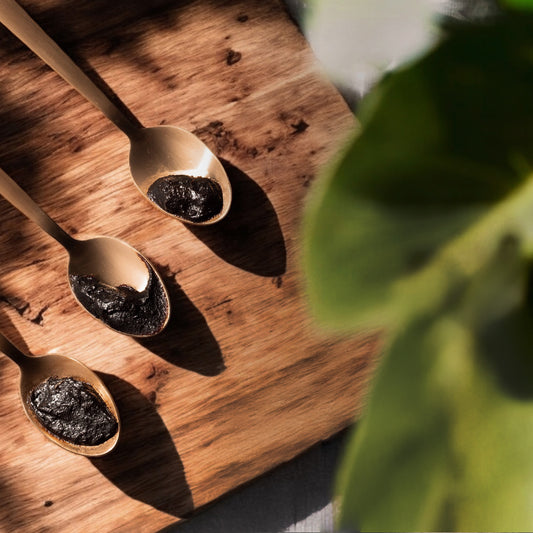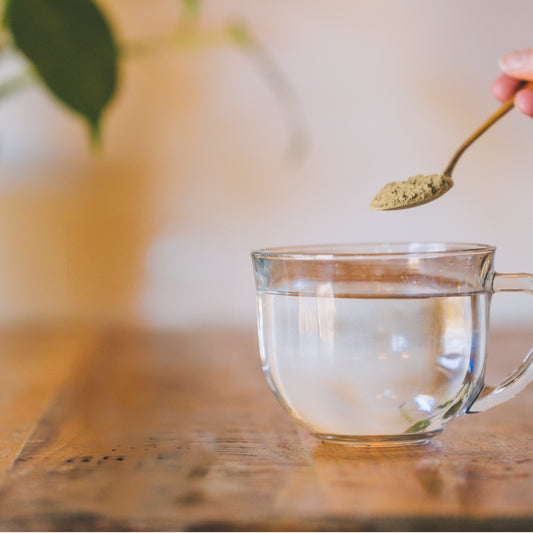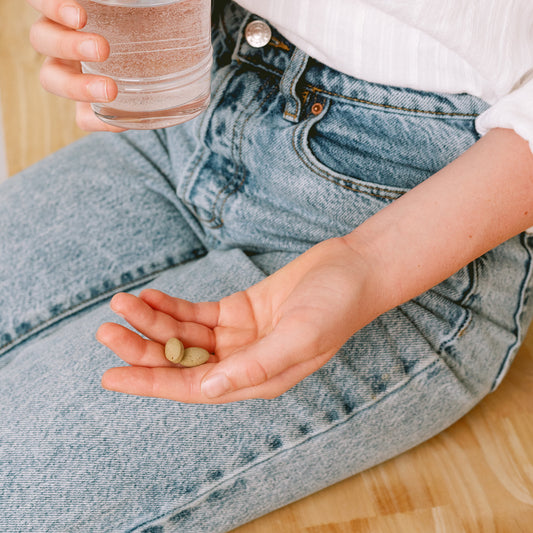Spring is a time of regrowth and renewal, and with it brings the opportunity to prepare the body for 365 days of optimal health. If we ignore the spring mandate, the body can struggle to maintain balance and health for the rest of the year and for years to come.
Ayurveda is a science that encourages a lifestyle in sync with nature, and a deep understanding of nature's seasonal requirements is essential! It is said in Ayurveda that 85% of all ailments are digestive related, and now we know that the lion's share of our digestive strength starts with the microbes in the soil.
Microbes in the soil change dramatically from one season to the next. There is a huge microbial surge of good bacteria each spring, nature's New Year, when the ground warms and the soil moistens.1 2
Emerging science is linking these microbial shifts to our changing seasonal requirements for optimal health. Surging spring microbes may help to decongest us in March and April, dissipate heat in the summer, and boost immunity in the winter.

In one report, deer were found to have specific gut bacteria in the winter months that help them digest rough and fibrous foods like tree bark, and another unique set of bacteria in the summer that help them digest leaves and grasses. This was also found to be true in humans, suggesting that we too should eat seasonally. 1
The report found that if the deer were to eat out of season, for example, bark in the summer, they would not have the proper gut bacteria to digest the bark, and it could cause such a severe bout of indigestion that it could literally kill the deer. 3 So what happens to humans if they eat out of season?
According to Ayurveda, the diet should change seasonally first and then be adjusted according to one's unique body type. A seasonal diet changes the microbiome, which is responsible for gut immunity, balanced blood sugar, and healthy mood and cognitive function.
New science is also finding that the trillions of microbes that live in our digestive tract also change and morph in response to emotions, stress, and feelings.
This is very much an Ayurvedic concept. In one study, when researchers performed a fecal transplant with the fecal matter of an anxious mouse and the fecal matter of a calm mouse, the anxious mouse became calm and vice-versa. When mice were living next to stressed cage-mates, their microbiomes were significantly altered. 4 5 6
Ayurveda holds the premise that the food we eat should be seasonal, cooked slowly, and grown, harvested, and transported all by sattvic people and eaten in a sattvic manner. Science now suggests that the microbes living on the foods we eat make up much of the intelligence and support for the chemistry of that plant. Stressful handling of our food or eating in haste will be felt by the microbes and, thus, emotionally charge the food, or the microbes attached to the food, and alter digestion.
In Ayurveda, our food is emotionally charged by the mindset in which we grow it, prepare it, cook it, and eat it. Our microbes are sensitive to the environment and, like the mice who were exposed to a social disrupter, strains of beneficial bacteria can vanish under stress. The subtle and more refined aspects of digestion can be affected by our emotions.
According to Ayurveda, it takes 35 days for the more refined digestive processes to be completed. The end result is the finest product of digestion, called ojas. Ojas is believed to be responsible for immunity, vitality, sexual vigor, radiant skin, and joy.
Each spring we are initiating a brand-new community of beneficial bacteria that can be morphed, shaped, and cultured by how we eat and what we think, feel, say, and do.
Spring Foods to Prepare Digestion for a New Year
In the spring, nature's goal is to prepare the intestinal tract for a new community of beneficial bacteria, decongest the lymphatic vessels or rasa channels that line the intestines, and then re-populate the gut with all the new happy microbes. This is typically a three-step process.
Step 1: Scrub the Gut with Bitter Roots
Deer, and even some of our grandparents, would dig up early spring roots like dandelion, turmeric, burdock, chaparral, goldenseal, and Oregon grape to eat. These bitter roots are loaded with liver-cleansing, bile-moving, intestinal-scrubbing alkaloids that cleanse all of the boggy mucus off the villi, clear the congestion out of the liver, and the excess fat off of the intestinal wall.
While it is no longer such a common practice to dig up roots and eat them, our ancestors survived on this practice.
Step 2: Re-populate the Gut with New Beneficial Bacteria
In the spring, the valleys fill with fluorescent green sprouts. These sprouts are loaded with nutrients and chlorophyll, and incorporating them into a springtime diet allows the new growth of our precious intestinal microbes.
Without this step, our microbiome, which does the heavy-lifting for our immunity, mood, energy, digestion, detox, blood sugar regulation, bone density, and just about everything else, would not sufficiently populate the gut.
Step 3: Decongest the Rasa-Lymph Vessels
Spring's harvest of spring greens, berries, and cherries offers an abundance of polyphenol-rich antioxidants which act as lymph-moving foods to flush any congestion built up around the gut.
Remember that the lymph concentrates around the intestinal tract, and if it is not sufficiently cleansed in the springtime by these powerful lymph-movers, the intestinal bogginess of the villi and lymph can “bake” into the digestive tract with the heat of summer, causing a slow breakdown of digestive strength.













